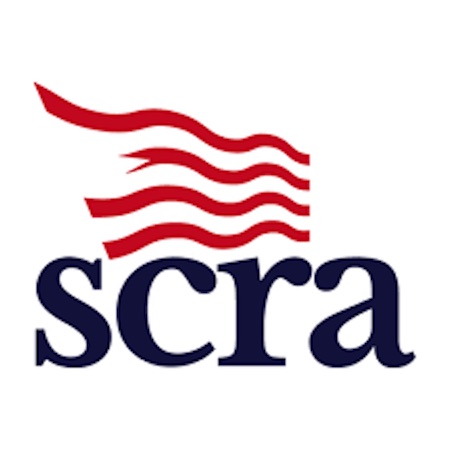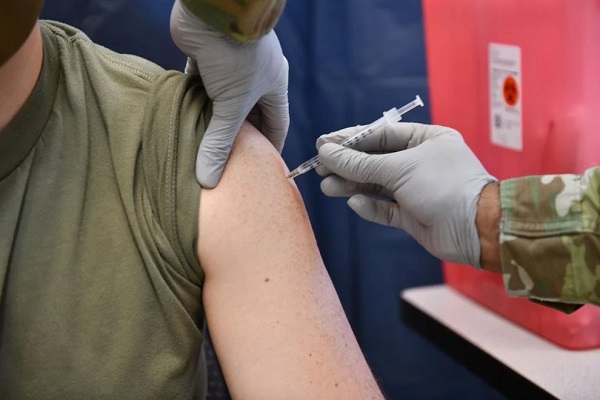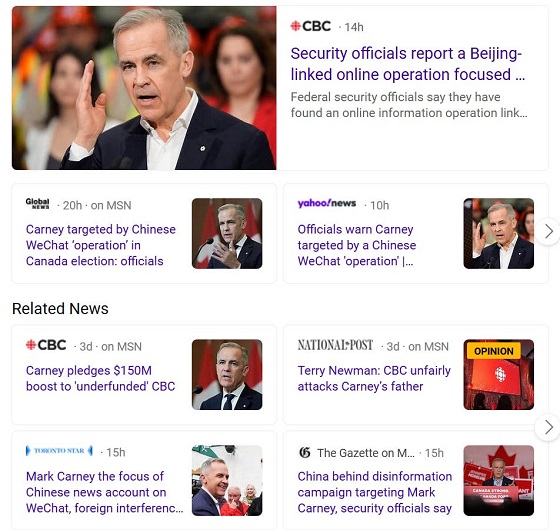Also Interesting
Guide For Property Managers On Dealing With Military Personnel

Managers of rental properties would do well to educate themselves on the SCRA in order to provide the best possible service to their tenants. If you’re a landlord, you should expect to make some exceptions for tenants with unusual needs. Sometimes the law will require you to provide certain accommodations, but sometimes management companies will see this as a chance to focus on a specific customer.
Property managers are crucial in assisting active-duty US military personnel with the management of their homes. Property owners should also be aware that tenants in this category have the right to void their leases early under the Service Member Civil Relief Act, even though doing so would normally be considered a violation of contract (SCRA).
Managers of rental properties must use caution when working with military tenants or repairing the residences of active-duty personnel.
Maintenance Of Active Duty Members’ Private Residences
Almost everybody who invests in property may do it successfully. There are various benefits available to military people and veterans who invest in real estate.
VA loans are originated by private lenders but backed by the Department of Veterans Affairs. Qualified borrowers can buy up to a four-flex with each purchase, and this is in addition to the one-year residency requirement.
Details About Veterans Administration Loans
- With no down payment.
- Mortgage interest rates are more manageable than those for personal loans from the bank.
- Getting private mortgage insurance is completely voluntary.
- There is a more lenient requirement for debt-to-income ratios that debtors must meet.
- Not having a high enough credit score.
- Required minimum year of occupancy as a primary dwelling.
- If a service member receives a new military assignment, they have one year from the date of their first purchase to make a second purchase at their new duty station.
- Assuming a $100,000 loan, a 25% down payment would be $36,000. Any additional funds needed beyond the entitlement cap must be paid for by the borrower.
- Loans are constrained by a cap. Veterans who qualify for the maximum loan amount without having to make a down payment can acquire that loan.
- There is no limit loan amount, but the VA will only guarantee up to a particular percentage of the loan.
- The maximum amount of money that can be borrowed to finance the purchase of a multifamily dwelling is based on the valuation of a single unit in the building.
VA mortgages are more lenient than conventional or FHA mortgages, yet anyone can still feel overwhelmed by the responsibility. Therefore, service members need to consider the pros and cons based on their individual circumstances.
When it comes to buying a home, some states are more desirable for members of the military than others. In areas with low property taxes and where renting typically costs more than a mortgage payment, buying may make financial sense.
How Your Property Management Services Might Benefit Military Families
If your company is located in a state with a sizable military installation, they would be great clients. After establishing trust with their clientele, real estate businesses that help military personnel find homes can easily expand their services to include property management.
If you own a property management business and are interested in attracting clients like those highlighted above, you may want to think about the following:
- Always-available account access.
- Managers of the property may respond to questions.
- Clearly stated prices, with a military discount added in.
- A video clip documenting the state of the house will be provided in addition to the standard written reports.
- Each month, detailed reports on cash flow and spending must be submitted.
Emphasize the benefits that clients might expect from partnering with your company. It is no secret that moving can be a stressful time, and that burden is compounded by the need to maintain maintenance, identify new tenants, negotiate leases, and schedule showings. Having a professional property manager on your team alleviates stress.
Since most service members choose to settle near their base of operations, renting out a home rather than selling it is a common option. Some property owners prefer to rent to members of the military or their immediate family.
Taking Into Account The Needs Of Service Members As Tenants
Renters in the military have rights under the Service Member Civil Relief Act, which should be taken into account. The landlord’s responsibilities take a back seat to the government’s contractual commitments to the United States military.
This law, along with others like it, was enacted to assist serving members of the armed forces in handling their private lives without compromising their ability to perform their official duties. The beautiful words of the U.S. Supreme Court sum up the purpose of these regulations: to “protect those who are under force to forgo their own issues to take up the tasks of the nation.”
A reassignment order after signing the lease allows the service member to terminate the lease in accordance with section 535. Tenants and landlords commonly have contrasting views on the extent and particulars of this right to termination. A precursor to the SCRA was the Soldiers and Sailors Civil Relief Act. The title was reworked and the lease termination provisions were enlarged and clarified in 2003.
When And How Do Lease Service Personnel Vacate Their Spaces?
The SCRA allows for the termination of a lease that was entered into before enlistment. In addition, it provided the service member right to terminate the lease upon receiving orders for a permanent change of station or a deployment lasting more than ninety days following the tenant’s initial military service.
Changes In Duty Station Or Deployment Status As A Ground For Lease Cancellation
It is not crucial that the orders be carried out on a specific day. A tenant cannot terminate the lease due to military orders for deployment or permanent change of station under the SCRA regardless of when the orders are received.
The Lessee must also provide the necessary termination documentation in a timely manner. Since the period to begin the termination process begins when you receive the orders, a military tenant may be able to cancel the lease months or even years before the day on which the instructions are to be carried out.
Not Paying Rent Will Result In Eviction
Additional requirements apply for lease cancellations caused by a tenant’s discharge. When their time in the armed forces is up, the vast majority of soldiers are released with either an honourable or general discharge. The SCRA specifies that these two administrative releases must be met before a lease termination option can be exercised. A document certifying your honourable discharge will be issued.
These are not to be ignored, but neither are the other two types of discharge. The DD Form 214 will indicate the nature of the tenant’s discharge if an honourable discharge certificate is not present.
The SCRA also details how managers or landlords can get rid of a tenant’s belongings from storage without a judge’s permission. Managers of rental properties can face criminal charges, fines, and perhaps a year in prison if they are found to have violated the SCRA in any way.
Also Interesting
Mortgage Mayhem: How Rising Interest Rates Are Squeezing Alberta Homeowners

As interest rates continue to climb, Alberta homeowners are facing a financial reckoning. With approximately 1.2 million Canadians set to renew their mortgages in 2025, many of whom secured loans during periods of historically low interest rates, a significant number are anticipating higher payments upon renewal. This financial strain is poised to impact households across the province, leading to tough financial choices and lifestyle adjustments.
The real estate market in Alberta has long been a beacon of affordability compared to cities like Toronto and Vancouver. However, with rising interest rates, even this relative advantage is beginning to erode. Homeowners who took on variable-rate mortgages or secured loans during historically low-interest periods are now feeling the squeeze. Many face mortgage payments that could increase by hundreds, if not thousands, of dollars each month.
Tough Choices: Cutting Back on Essentials and Luxuries
With nearly 60 percent of mortgage holders in the province expecting higher payments upon renewal in 2025, financial strain is set to hit households hard. According to recent reports, 35 percent of homeowners anticipate a slight increase, while 25 per cent brace for a significant hike. For many, this means tough financial choices and lifestyle adjustments.
Among those expecting a rise in mortgage payments, a significant portion anticipates financial pressure on their household. In response, Albertans are slashing discretionary spending, with many cutting back on non-essentials. Travel budgets are taking a hit, with some reducing or eliminating trips altogether. Even more concerning, others say they will have to trim spending on essentials like groceries and gas to stay afloat.
The strain extends beyond just the affected homeowners. Local businesses, especially those in retail, hospitality, and tourism, are likely to feel the ripple effects. When a significant portion of the population pulls back on spending, economic activity slows, and small businesses may struggle to stay profitable.
Financial advisors suggest that those facing increased mortgage payments should revisit their household budgets, explore refinancing options, and consult with their lenders to see if adjustments can be made.
The Alberta Economic Factor: Boom, Bust, and Mortgage Stress
Unlike other regions in Canada, Alberta’s economy remains tightly linked to the oil and gas sector, leading to greater volatility in household incomes. While wages can be high, employment remains unpredictable, making financial resilience more difficult to maintain. This economic unpredictability has always been a challenge for residents. When the oil industry booms, wages surge, employment rates rise, and homeownership becomes more accessible.
But during downturns, layoffs become common, and homeowners can find themselves struggling to keep up with payments. This cycle makes high mortgage payments especially daunting for Albertans, many of whom may not have significant emergency savings to weather financial storms.
In cases where savings run out, some homeowners may need alternative financial solutions, such as a line of credit from Fora Credit, to cover emergency expenses and avoid missing payments.
A Housing Shift: Downsizing and Relocating
For those struggling to manage higher mortgage payments, some are considering drastic moves. Downsizing or relocating to more affordable areas has become a viable option for many Albertans. Homeowners are exploring opportunities to reduce monthly carrying costs, whether by moving to smaller homes or shifting to regions with lower real estate prices.
There is also a growing interest in multi-generational living arrangements. Families are pooling resources to purchase homes together, enabling them to split mortgage costs and share living expenses. While this approach has been common in other parts of the world, it is becoming an increasingly attractive solution in Alberta as mortgage affordability diminishes.
What’s Next for Alberta’s Housing Market?
As the Bank of Canada continues to grapple with inflation, interest rates may remain elevated for the foreseeable future. This could further strain homeowners and cool Alberta’s once-hot housing market. Higher mortgage rates make it more difficult for new buyers to enter the market, leading to decreased demand and potentially stabilizing or reducing home prices in some areas.
Experts suggest that while home values may soften slightly, a full market crash is unlikely. Alberta’s relatively low housing costs compared to major metropolitan areas in Canada provide some buffer against drastic devaluations.
Still, for those facing renewal in 2025, preparation is key. Financial advisors recommend stress-testing mortgage payments, meaning homeowners should calculate potential increases and adjust their budgets accordingly.
How to Prepare for Rising Mortgage Costs
Homeowners who anticipate higher payments should take action now rather than waiting until their renewal date arrives. Some strategies to consider include:
● Refinancing: If possible, homeowners should explore refinancing options that might offer lower rates or extended amortization periods to reduce monthly payments.
● Cutting Expenses: Budget adjustments, such as reducing discretionary spending and optimizing essential costs, can help cushion the impact of higher mortgage payments.
● Increasing Income: Seeking additional income sources, whether through side gigs, renting out portions of their home, or negotiating for a salary increase, can help mitigate financial strain.
● Seeking Professional Advice: Consulting with mortgage brokers, financial advisors, and lenders can provide tailored solutions for those struggling to meet their new financial obligations.
For Albertans facing mortgage renewal in 2025, now is the time to assess financial options, seek expert advice, and prepare for a potentially rocky road ahead. While the challenge is significant, proactive planning and smart financial decisions can help homeowners navigate this difficult period and maintain stability despite rising interest rates.
Also Interesting
Exploring Wildrobin Technological Advancements in Live Dealer Games

In the rapidly evolving world of online gaming, Wildrobin casino stands out for its innovative approach to live dealer games, setting new standards in user experience and technological advancements. Wildrobin continues to refine these features for a truly immersive setting.
Live dealer games have become a cornerstone of the online casino industry, offering players an immersive experience that closely mirrors the excitement of a physical casino. This format combines the convenience of online gaming with the authenticity of real-time interaction, facilitated by professional dealers and high-definition streaming technology.
The Rise of Live Dealer Games
The evolution of live dealer games has been marked by significant technological milestones. From basic single-camera setups to sophisticated multi-angle broadcasting systems, the industry has witnessed remarkable growth.
Modern platforms now utilize advanced OCR (Optical Character Recognition) technology to instantly digitize physical card movements and game outcomes, ensuring complete transparency and real-time data transmission to players worldwide. Wildrobin fully embraces these technologies to enhance player trust.
Technological Innovations at This Casino
Wildrobin casino has been at the forefront of integrating cutting-edge technology into its live dealer offerings. By leveraging advancements in extended reality and real-time data processing, the casino enhances the gaming experience, providing players with seamless and interactive gameplay. These innovations improve visual and audio quality and ensure a more engaging and realistic environment for users. Moreover, Wildrobin pursues continuous experimentation with cutting-edge solutions to stay ahead of industry trends.
The integration of sophisticated bandwidth optimization techniques and adaptive streaming technologies ensures uninterrupted gameplay across various devices and network conditions. This technical infrastructure allows for seamless scaling of concurrent users while maintaining high-quality video streams and minimal latency, crucial factors in delivering an authentic casino experience to players regardless of their location.
Enhancing User Experience
The focus on user experience is evident in Wildrobin casino’s commitment to continuous improvement. The implementation of advanced algorithms and AI-driven analytics allows for personalized gaming experiences, catering to individual player preferences and behaviors. This approach increases player satisfaction and fosters a loyal customer base.
Advanced chat systems and interactive features create a social atmosphere where players can interact with dealers and fellow participants in real-time. The implementation of customizable user interfaces allows players to adjust their viewing angles, table statistics, and betting options according to their preferences. These personalization options, combined with intuitive navigation and seamless payment processing, contribute to a more engaging and user-friendly gaming environment.
The Future of Live Dealer Games
As technology continues to evolve, Wildrobin casino is poised to lead the way in the next generation of live dealer games. With ongoing research and development, the casino aims to integrate even more sophisticated technologies, such as virtual reality and augmented reality, to further blur the lines between virtual and physical gaming environments.
This commitment to innovation ensures that Wildrobin casino remains a key player in the online gaming industry. Wildrobin is also dedicated to implementing breakthroughs that will shape the future of immersive casino entertainment.
-

 Also Interesting1 day ago
Also Interesting1 day agoMortgage Mayhem: How Rising Interest Rates Are Squeezing Alberta Homeowners
-

 2025 Federal Election1 day ago
2025 Federal Election1 day agoConservative Party urges investigation into Carney plan to spend $1 billion on heat pumps
-

 Alberta2 days ago
Alberta2 days agoAlberta’s embrace of activity-based funding is great news for patients
-

 2025 Federal Election1 day ago
2025 Federal Election1 day agoCommunist China helped boost Mark Carney’s image on social media, election watchdog reports
-

 COVID-192 days ago
COVID-192 days agoMassive new study links COVID jabs to higher risk of myocarditis, stroke, artery disease
-

 2025 Federal Election1 day ago
2025 Federal Election1 day agoFifty Shades of Mark Carney
-

 Also Interesting1 day ago
Also Interesting1 day agoExploring Wildrobin Technological Advancements in Live Dealer Games
-

 2025 Federal Election1 day ago
2025 Federal Election1 day agoCorporate Media Isn’t Reporting on Foreign Interference—It’s Covering for It




